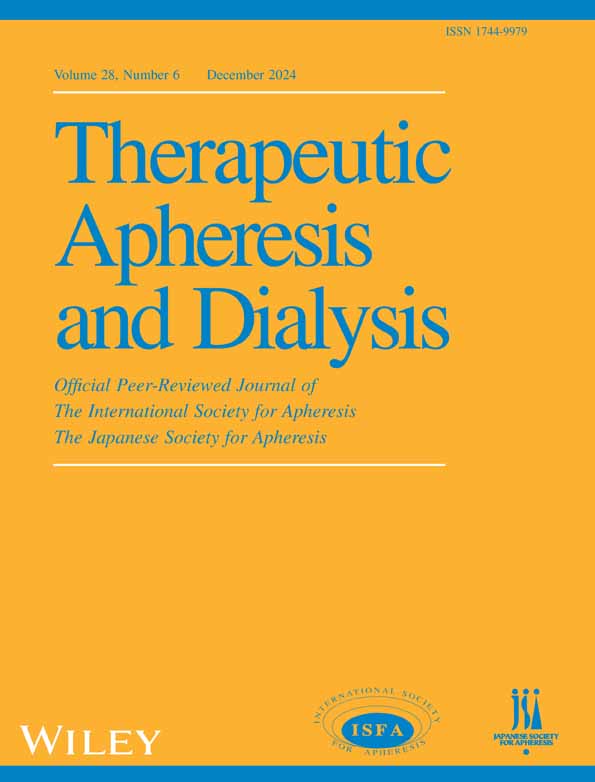Association of vascular endothelial growth factor-C, plasma angiotensinogen and left ventricular hypertrophy in patients with hemodialysis
First and second authors are equal authors and both have equal contributions.
Abstract
Introduction
This study aims to examine the relationship between fluid overload, Vascular Endothelial Growth Factor C (VEGF-C), plasma Angiotensinogen (pAGT), and echocardiography findings in hemodialysis patients.
Methods
This was a single-center, cross-sectional study. Patients were divided into two groups according to mid-week inter-dialytic weight gain (mIDWG): (1) mIDWG ≤3% and (2) mIDW >3%.
Results
A total of 55 patients were enrolled in this study. While the mean pAGT and left ventricular mass index were significantly higher in patients with mIDWG >3% compared to patients with mIDWG ≤3%, VEGF-C was similar between groups. pAGT ≥76.8 mcg/L, VEGF-C ≤175.5 pg/ML, and pAGT /VEGF-C ≥0.45 were significant cut-offs for the prediction of left ventricular hypertrophy(LVH). Univariate logistic regression analysis revealed that these cut-off values were significantly associated with LVH.
Conclusion
Renin-angiotensin-aldosterone system activation may persist in hemodialysis patients with excessive IDWG. Additionally, pAGT and VEGF-C could be risk factors for the development of LVH.
CONFLICT OF INTEREST STATEMENT
The authors have no conflicts of interest to declare.




